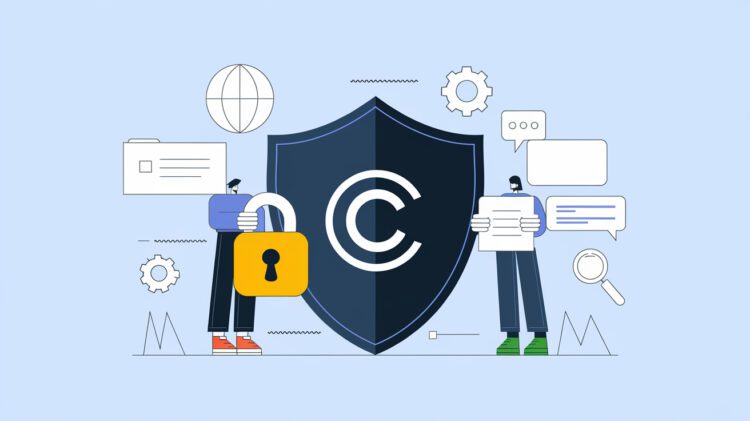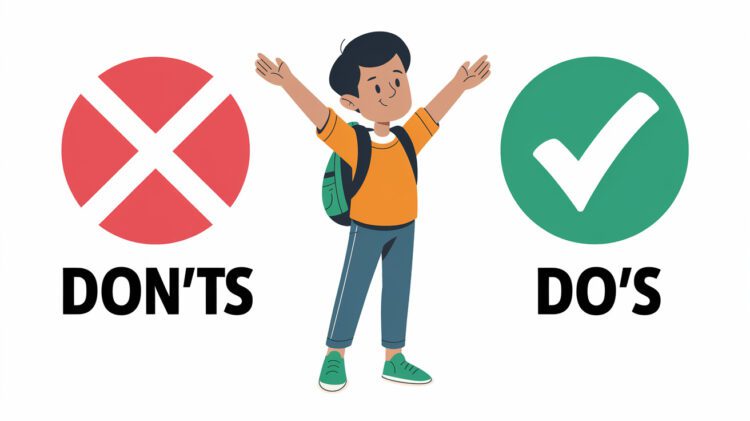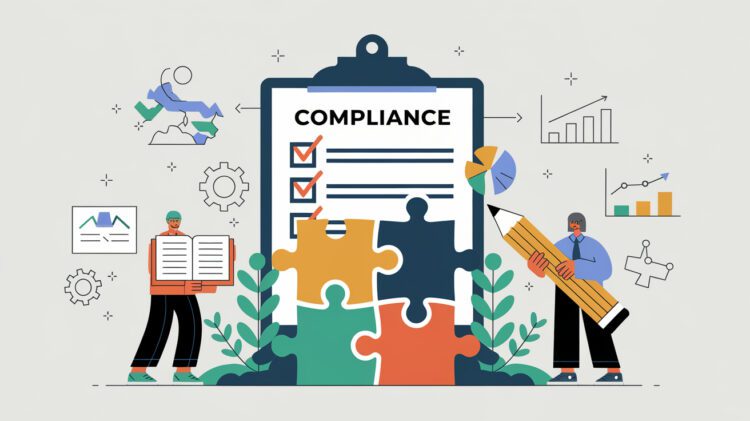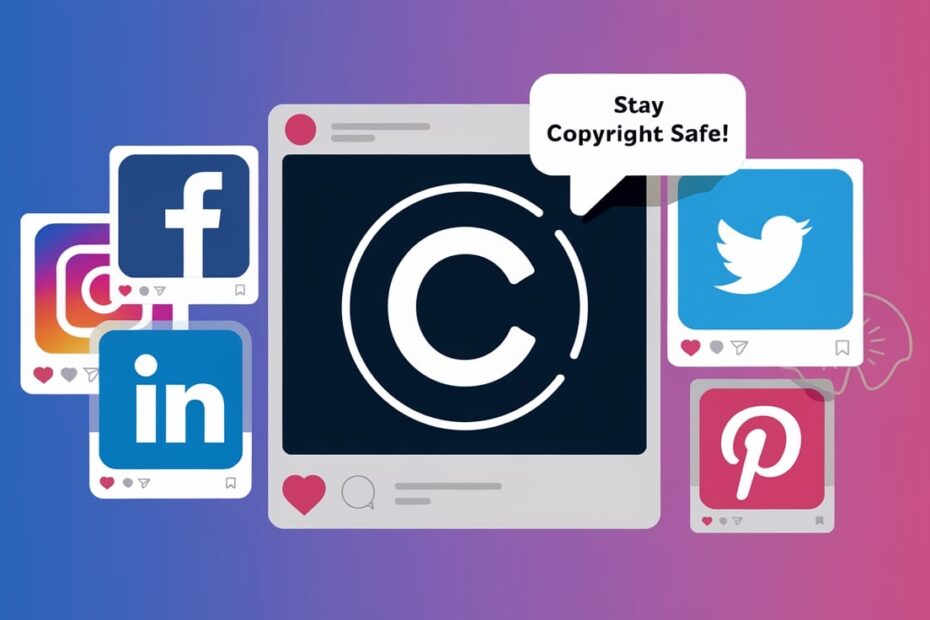Alright, let’s be real—who doesn’t love a good stock image to give our social media feeds that extra pop? It’s like magic: no need for a photography budget, and you’ve got a polished post ready to go. But here’s the kicker: legal considerations for using stock images on social media aren’t always straightforward. From copyright rules to licensing fine print, there’s more to it than a simple download and upload.
In this guide, I’ll walk you through seven essential tips to help keep your posts sharp, safe, and totally legit. Let’s dive in!
1. Navigating Platform Rules and Legal Considerations for Using Stock Images on Social Media
Every social media platform has its own unique rules and quirks when it comes to using images. Here’s a breakdown of what to watch out for on the top five platforms:
-
Instagram
- Respect Copyright: Instagram takes copyright seriously. If you upload an image you don’t own or have rights to, you’re setting yourself up for a takedown, or worse—a suspension! So, if you’re sharing images, make sure you have permission, even if you’re adding credit.
- Beware of Screenshots and Reposts: Instagram is full of re-shared images, but reposting content without explicit permission (even if you tag the original creator) can lead to issues. Always ask the original poster for permission or use a reposting tool that keeps the source intact.
- Watch Out for Influencer Partnerships: For influencers, using licensed stock photos in brand partnerships needs extra caution. Make sure you check with the brand or agency for licensing specifics before including stock images in sponsored posts.
-
Facebook
- Commercial Use and Ad Compliance: Facebook is strict with businesses, especially with paid content. If you’re running ads with stock images, confirm the image license covers commercial use. Non-compliant images could get your ad disapproved.
- Community Reporting: Facebook allows users to report content violations, including copyright infringement. If someone reports your image as unlicensed, it could lead to takedowns or penalties.
- Cover Photos and Profile Pictures: These spaces are highly visible, and Facebook applies specific rules here. It’s best to use original images or fully licensed stock photos that allow for public display since they represent your brand’s first impression.
-
Twitter
- Sharing Isn’t Always Safe: While Twitter’s retweet culture encourages sharing, it doesn’t give you free rein to post images without permission. Always ensure you have the proper rights to any image used in your tweets.
- Embedding Without Copyright Risk: Many brands love embedding tweets with images for engagement. However, if you’re embedding tweets on other platforms or websites, confirm that the original image is licensed for such use.
- Avoid Assumptions on Fair Use: Just because something seems “newsworthy” doesn’t mean you’re covered by fair use. Twitter often sees rapid news cycles, but if you’re sharing an image for commentary, double-check if it’s licensed for editorial use.
-
LinkedIn
- Professional Content Standards: LinkedIn is a professional space, and that includes expectations around content authenticity. Use only licensed images in your posts to maintain credibility and avoid copyright risks.
- Company Page Compliance: If you’re posting as a company, it’s vital to use images that reflect your brand and have the necessary licenses. Avoid unlicensed images in company profiles or ads to keep your reputation intact.
- Avoiding Legal Trouble in Sponsored Content: Sponsored posts on LinkedIn are under scrutiny. If you’re promoting a post, ensure the image has a license that allows for commercial and promotional use.
-
Pinterest
- Pinning Doesn’t Equal Permission: Just because an image is on Pinterest doesn’t mean it’s free to use. When pinning, be sure the image is licensed for such sharing or that you have the owner’s permission.
- Pin from Verified Sources: Use images from trusted sources or your own licensed collection. Pinterest encourages original content, so linking to verified sources helps maintain legal compliance.
- Clear Attribution: Pinterest thrives on visual discovery. If you’re pinning images with a specific creator’s style or concept, make sure the attribution is clear—this protects you and the original creator.
2. Choose the Right License for Each Use

Let’s talk licenses! Choosing the right one can save you a world of legal trouble.
- Royalty-Free: This is a common license type that allows you to use the image multiple times without paying each time. But hold on—”royalty-free” doesn’t mean “use however you like.” Most royalty-free licenses restrict commercial use, alterations, or redistribution.
- Rights-Managed: These licenses are a bit more complex. Rights-managed images often require you to specify how, where, and how long you’ll use them. They’re great for exclusive use, but costs can add up, especially if you want to use the image in multiple places.
- Editorial Use Only: You’ve seen this label before, right? Editorial images are restricted to non-commercial contexts, like news stories or commentary. Using these for ads or sponsored posts? Big no-no! Stick to rights-managed or royalty-free images for commercial needs.
Choosing the right license is like picking the right tool—you want one that fits the job without bringing any unwanted complications.
For a deeper dive into licensing types, check out our guide on Understanding Stock Image Licensing Types. And if you’re interested in free licenses, explore Creative Commons Licenses for options that often allow free use with specific restrictions.
3. Follow Essential Dos and Don’ts

Here’s your roadmap for safe image use:
- Do: Verify licenses. Always double-check the license terms before posting. It’s like reading the fine print on a contract—tedious but worth it.
- Do: Credit creators if required. If a license requests attribution, don’t skip it. Just a simple “Photo by [Photographer’s Name]” can keep you safe.
- Don’t: Edit without permission. Some licenses prohibit altering the image. If you’re adding filters or cropping, ensure the license allows it.
- Don’t: Assume free image sites are a free-for-all. Websites like Unsplash or Pexels are fantastic resources, but they still have terms and restrictions.
These dos and don’ts may sound obvious, but a surprising number of people still trip up here. Follow them, and you’re on solid ground.
4. Secure Permissions for User-Generated Content (UGC)
UGC is gold—it’s authentic, it’s engaging, and it’s real. But it also comes with its own set of rules.
- Ask First, Share Second: Just because someone tagged you in a great photo doesn’t mean you can share it without permission. A quick message asking if you can repost goes a long way in respecting creators’ rights.
- Written Consent is Key: Whenever possible, get written permission. This doesn’t have to be formal; even a “Sure, you can share!” in a DM works. Keep a record—it could save you a headache later.
- Always Credit: When you share UGC, tagging the original poster isn’t just polite; it shows you respect their work. Plus, it fosters goodwill with your followers, making them more likely to share content with you in the future.
Using UGC properly helps build trust with your community while keeping you on the right side of copyright law.
5. Develop a Compliance Strategy for Social Media

If you’re posting regularly, a compliance strategy can be a lifesaver.
- Create a Licensing Checklist: Keep track of each image’s license. Who knew spreadsheets could be your best friend in the world of image use?
- Document Everything: Hold onto all permissions and license receipts. These records are your defense if questions about usage arise.
- Educate Your Team: Make sure everyone posting on behalf of your brand knows the basics of copyright and licensing. Knowledge is power, and it protects your brand from accidental infringements.
Having a compliance plan may seem like extra work, but it’s one of the best ways to ensure your social media is legally secure.
6. Debunk Common Copyright Myths

Some misconceptions about image use just don’t go away! Let’s clear up a few and help you avoid these common pitfalls:
Myth 1: “If it’s on the internet, it’s free to use.”
- Reality: Just because an image is easy to find online doesn’t mean it’s free or copyright-free. Most images are protected by copyright, and using them without permission can lead to legal issues. Unless an image is explicitly labeled for free use (like certain Creative Commons licenses), assume it’s off-limits.
Myth 2: “Royalty-free means unrestricted use.”
- Reality: “Royalty-free” only means that you don’t pay each time you use the image; it doesn’t grant unlimited rights. Many royalty-free licenses have restrictions on modifications, redistribution, or use in commercial projects. Always check the specific terms for each royalty-free image.
Myth 3: “If I give credit, I’m safe.”
- Reality: Giving credit doesn’t replace the need for permission. While attribution is often required, especially for Creative Commons-licensed images, you still need to check the license itself. Giving credit without a license won’t protect you legally.
Myth 4: “Stock images are safe for any type of use.”
- Reality: Stock images come with specific licenses that may limit how they’re used. For example, editorial-only images can’t be used in commercial projects, and some licenses restrict use in advertisements. Read each license carefully to ensure compliance.
Myth 5: “Free image websites mean I can do anything with the images.”
- Reality: Websites like Unsplash, Pexels, and Pixabay offer free images, but each has terms and restrictions. Some free images can’t be used in commercial projects, and certain uses (like modifying or reselling) may be prohibited. Always review the site’s terms to understand your rights.
Myth 6: “Once I purchase an image, it’s mine to use however I want.”
- Reality: Buying an image doesn’t mean you own it outright; you’re actually purchasing a license to use it under specific terms. Most purchased images still have restrictions, such as limitations on redistribution, resale, or usage in a certain number of projects.
Myth 7: “I can edit any image I find if it’s for personal use.”
- Reality: Even personal use doesn’t give you unrestricted rights. Some licenses prohibit any alterations, especially for editorial or right-protected images. Modifying an image can still infringe on the creator’s rights, so always check the license before making changes.
Myth 8: “Images from social media can be reused if they’re publicly posted.”
- Reality: Social media images are still protected by copyright, even if publicly posted. Reposting or repurposing an image without permission violates copyright laws. Always ask for permission before using someone else’s social media images, even if they’re publicly available.
7. Learn from Real-Life Legal Cases
There’s no better teacher than experience—especially when it’s someone else’s! Let’s look at a few real-life cases where brands learned the hard way about copyright compliance.
- Case Study: A major brand’s viral ad campaign backfired when it used an unlicensed stock image. The creator of the image filed a lawsuit, and the brand had to pay significant damages. Lesson learned? Always check licensing before including stock images in high-visibility content.
- Influencer Mishap: An influencer with a large following used an editorial-licensed image in a sponsored post, violating the “non-commercial use only” clause. The image owner issued a takedown request, and the post was removed. The influencer’s reputation took a hit, and they had to issue a public apology to maintain credibility.
- Company Profile Crisis: A well-known company added an unlicensed image as a LinkedIn cover photo, assuming it was fair use. The copyright owner reached out, and LinkedIn removed the image, embarrassing the brand publicly. This incident highlighted the importance of using fully licensed images in professional spaces.
These examples serve as cautionary tales, reminding us that while stock images are convenient, they come with responsibilities. By following licensing rules and using images legally, you can protect your brand and maintain a trustworthy reputation with your audience.
Conclusion
Navigating the world of stock images on social media may seem complicated, but a few smart habits can keep you on the right track. By following these seven tips—understanding platform-specific policies, choosing the correct license, avoiding common pitfalls, and learning from others—you’re already well on your way to building a compliant and trustworthy social media presence. Remember, respecting copyright and licensing isn’t just about avoiding fines; it’s about supporting creators and maintaining your brand’s integrity.
Take a moment to review these guidelines each time you use a stock image, and you’ll have the confidence to post without worry. After all, isn’t peace of mind the best filter of all?
